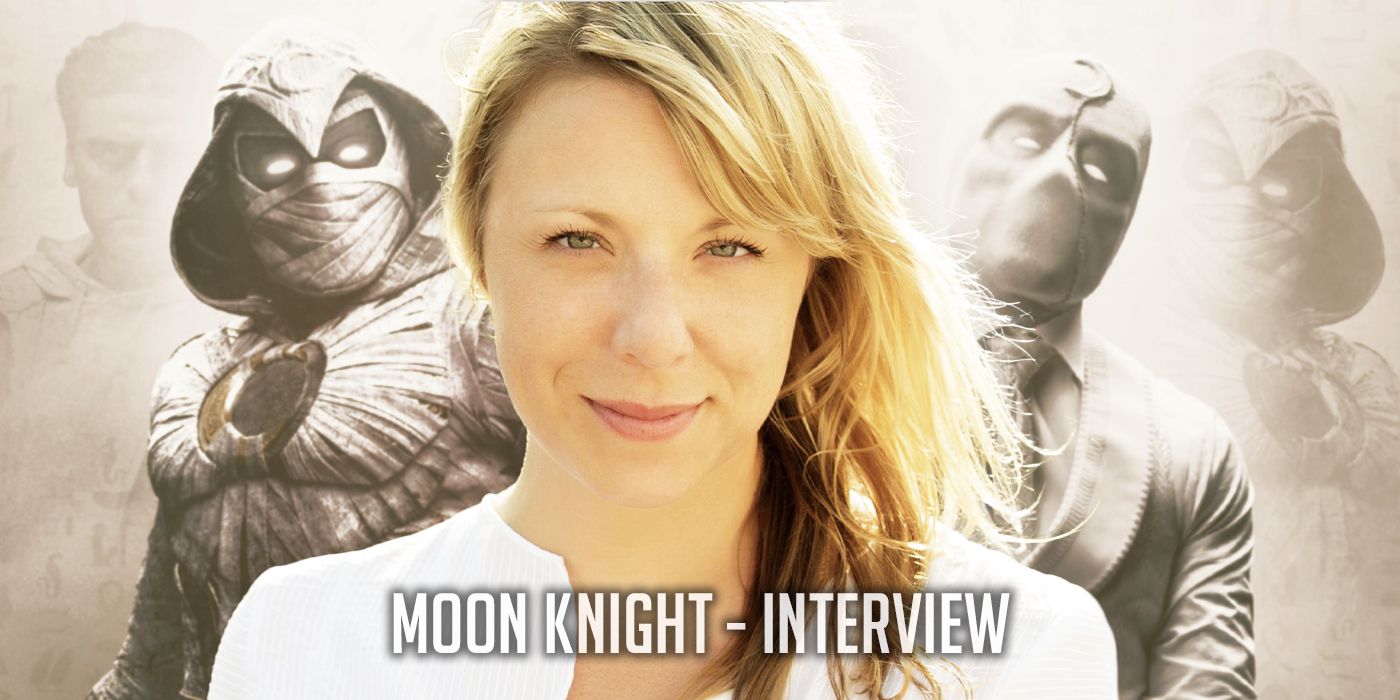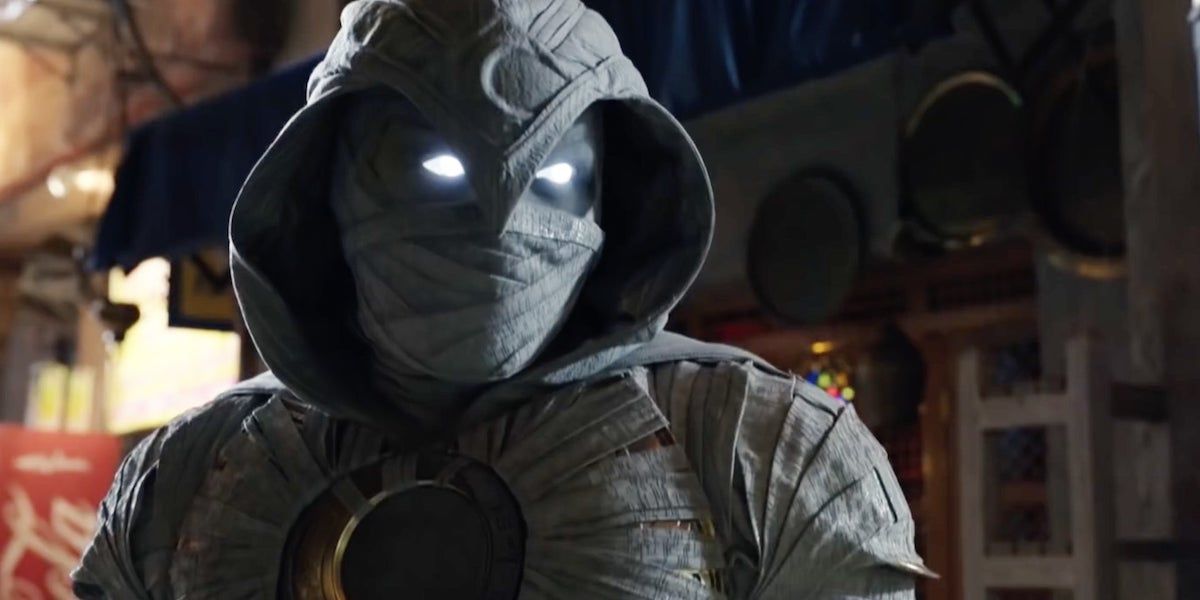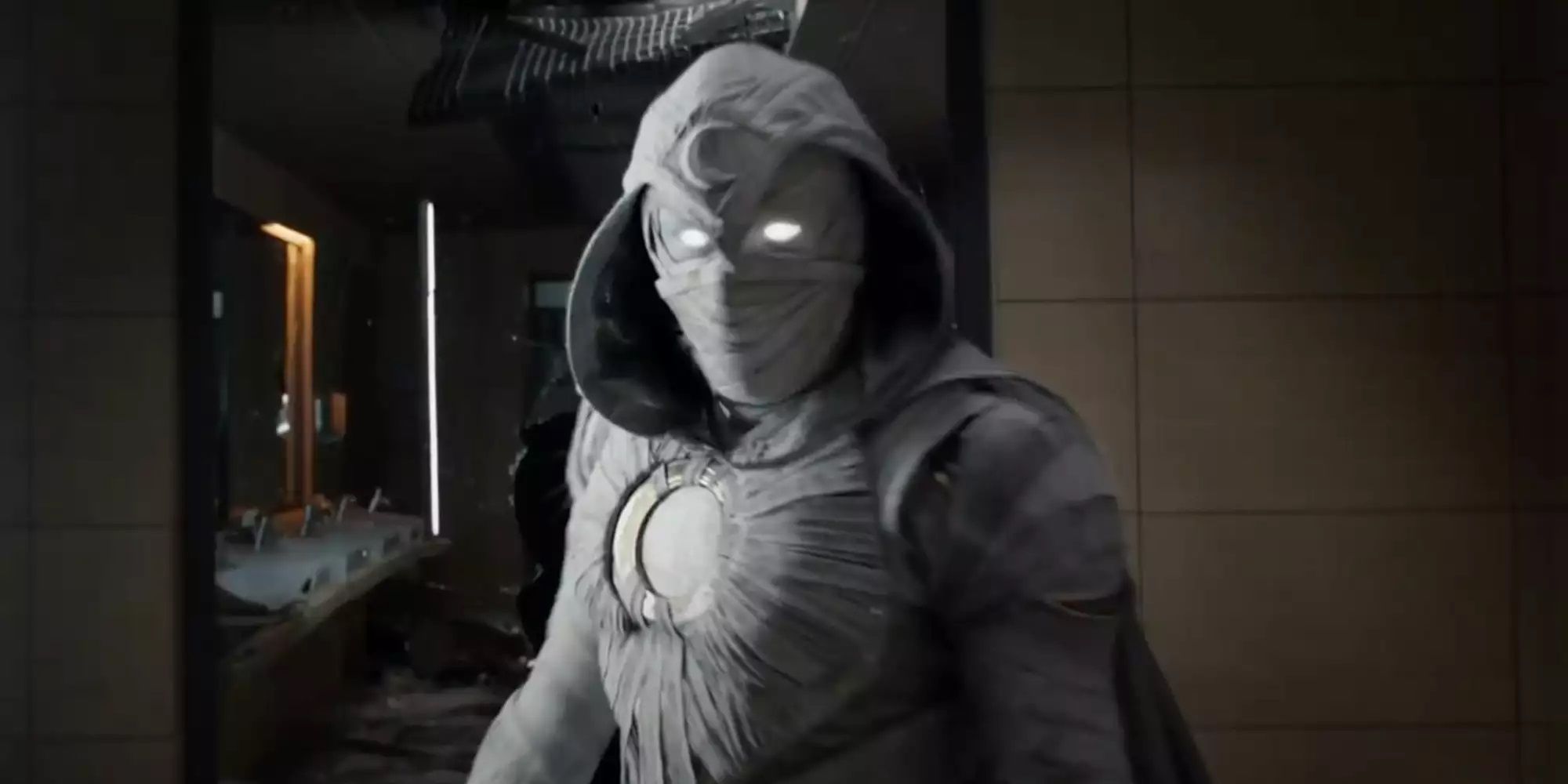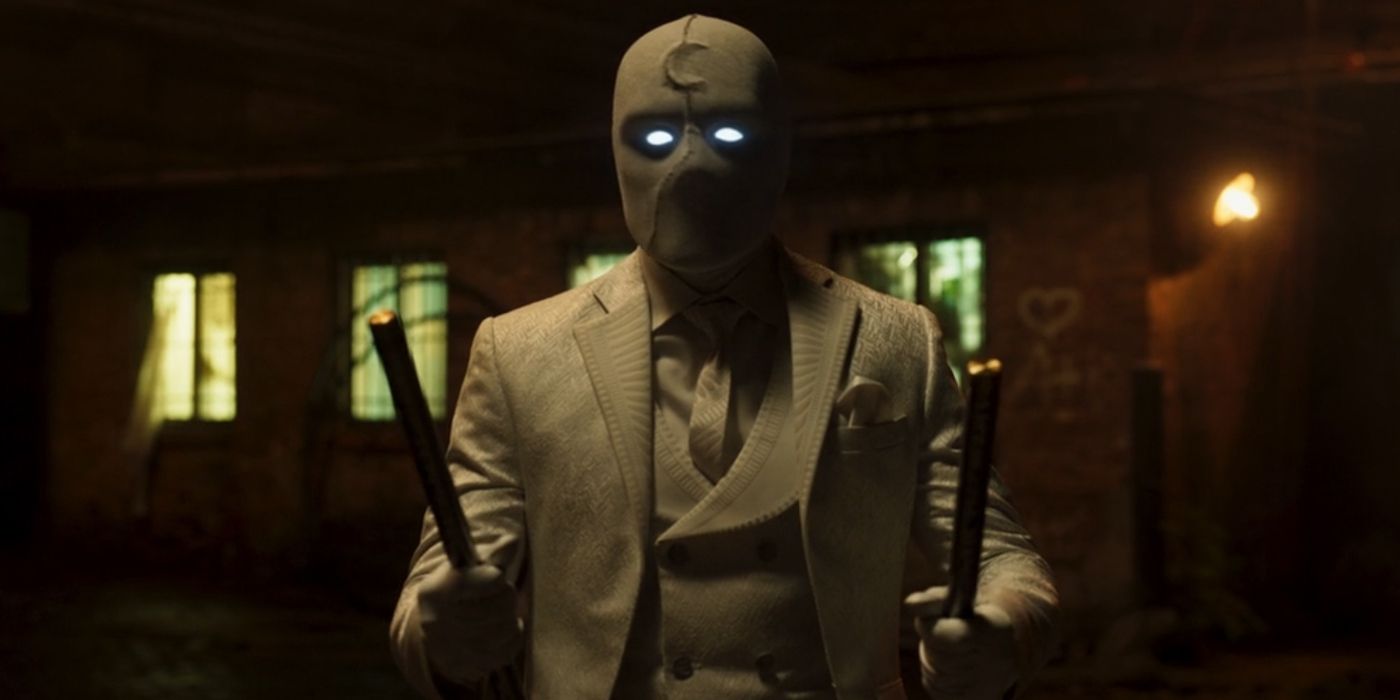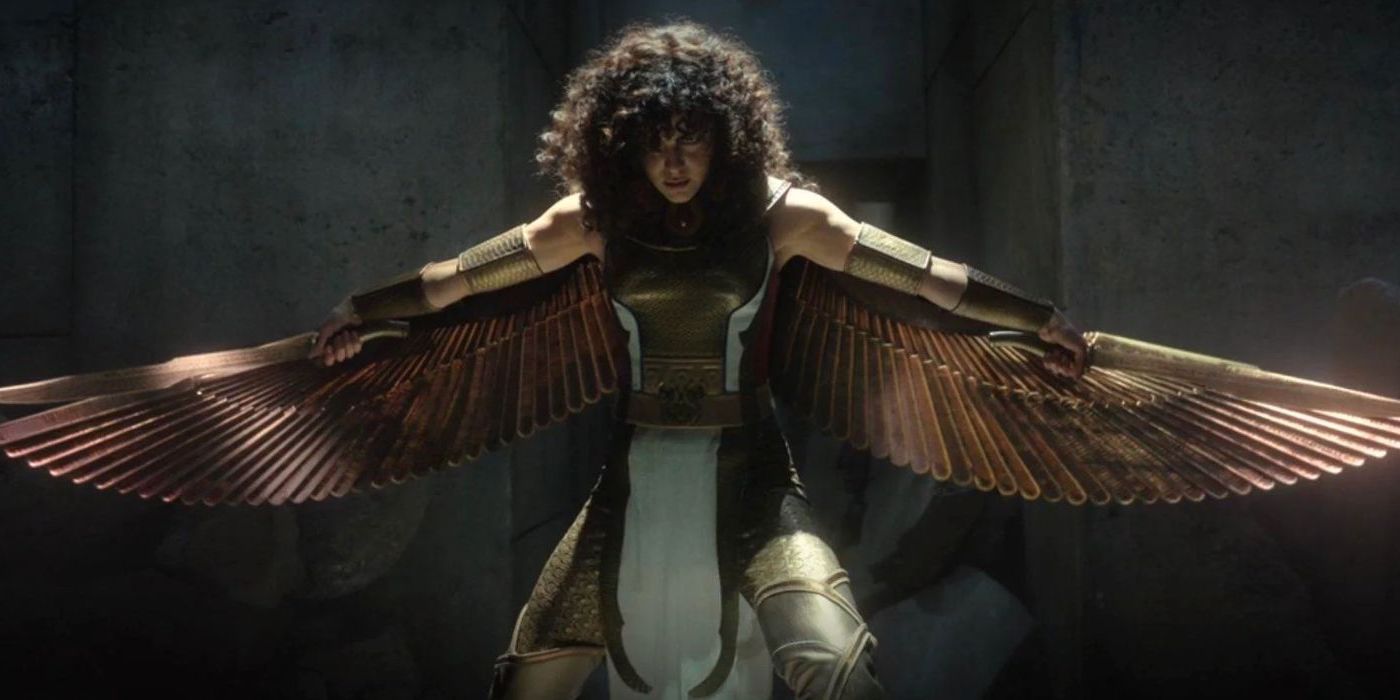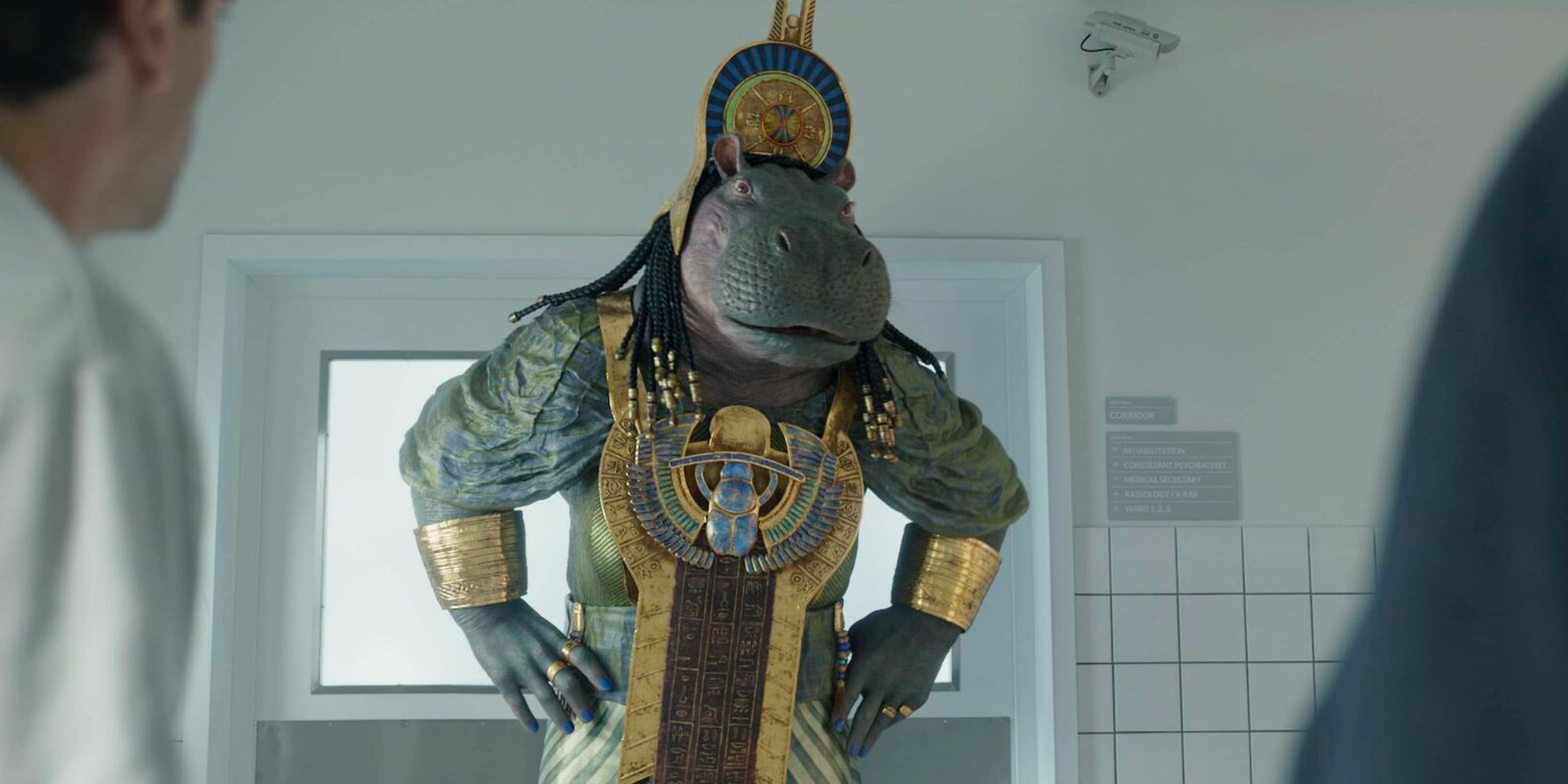When it comes to the MCU, whether it’s in the movies or on TV, costumes are one of — if not the most — recognizable and iconic parts of the franchise’s existence. From Doctor Strange’s magical cape to Iron Man’s armor, each superhero suit is its own iconic piece of history, recognizable by even the most casual of Marvel fans. But what happens when you combine a superhero suit with the ceremonial armor of an ancient Egyptian god?
Ask Meghan Kasperlik, costume designer for Marvel’s Moon Knight, starring Oscar Isaac. Led by a character (or characters, counting Marc Spector’s two alters) who is in service to the Egyptian god of the moon, Moon Knight’s costumes are heavily inspired by the pharaohs and gods of an age long past, which makes for one hell of a superhero show, and some of the most fascinating costumes the MCU has ever seen. From Marc Spector’s ceremonial Moon Knight garb to Layla’s Scarlet Scarab costume, Kasperlik was responsible for them all, working with a talented team to hand-craft the beautiful, intricate costumes fans the world over are now replicating.
Kasperlik’s work is now Emmy-nominated, earning her a nod for Outstanding Fantasy/Sci-Fi Costumes for the show’s season finale, “Gods and Monsters.” Collider was excited to talk to her about her intricate, beautiful costumes, which were recently displayed at San Diego Comic-Con for fans to admire, elaborate details on full display for both the casual fan and the cosplayer interested in knowing every last little detail.
During this one-on-one interview with Collider, Kasperlik discussed her design process and how she crafted fully practical costumes for every character, including CGI ones, as well as what lessons she brought from Watchmen to the MCU, and what it’s like seeing her original designs interpreted by fans as cosplays. Check out the full interview below, and stream Moon Knight now on Disney+.
COLLIDER: First off, congrats on the Emmy nomination. I cannot imagine how that feels.
MEGHAN KASPERLIK: Thank you. Yeah, it's really cool. I'm really excited for everyone on my team that worked so hard. It's great. I'm excited.
I wanted to ask, because this is not your first comic book project you’ve worked on. You worked on Watchmen. I was curious, did anything you learned on that show transfer over into working on Moon Knight at all?
KASPERLIK: Definitely when doing different techniques and all the stuff that's more the technology, and the 3D printing, and the vacuform and whatnot for the suits. That always plays into it. I kind of mimicked slightly...when I did Watchmen, I took over. I didn't do the pilot. I did the series, so there [were] things that needed to be corrected about certain aspects of the Sister Night costume. We really had to correct the hood. In designing the Moon Knight costume, I was like, "This is what works. This is what doesn't work. This is going to help keep the shape." I used those points that I knew from Watchmen to help with that.
In terms of research, because, obviously, this show takes from not only a lot of comic book history, but a lot of real life history. I know you took some inspiration from stuff like the beaded dress they have at the Boston Museum and stuff like that, but percentage wise, what percentage was real-life Egyptian stuff that you researched, and what percentage was the comics?
KASPERLIK: Most of it, I would say, was real-life Egyptian. When you have the comic, you always need to adapt to now, because those comics are not... 90% of them are not written now. I really looked at Ancient Egypt, Egyptian culture today. I went to the MET. I looked at different museums — my assistant was from London, so he went to the British Museum — and then [I just used] online research.
For the contemporary costumes of the Egyptians, our director was Egyptian. May [Calamawy], who plays Layla, is part Egyptian. Mohammed [Diab], the director, his assistant was Egyptian, so I was constantly talking to them to make sure I wasn't just the American trying to look at what Egyptians are wearing today, and really getting a feel and looking at different Instagrams. Instagram is such a...it's not just for influencers. It's also to see what real people are wearing, so that's really helpful.
I did stalk your Instagram a little bit to see what you were posting about the show. You've posted these gorgeous behind the scenes pictures, but I noticed all of the hand painting and the hand beading and stuff that went into the costumes. How many people did you have on the team doing just tiny detail things like that?
KASPERLIK: I had one person who was doing just hand painting. I had one person who was a leather worker and one person was a metalsmith. Then, I had an amazing tailoring department. I would say there's probably fifteen people in there. Usually on jobs, you get one, two, or three. This was amazing because I had so many people in there. I had four people in my aging and dying department, but then, we still had people on set and people doing background fittings. Overall, I probably had like thirty-five people in my department, maybe forty, and then when we had specialty things. Most of the time, everything was pretty much made in-house, except for the actual Moon Knight costume that FBFX did, and they have the whole team.
I was going to say, about that specific Moon Knight costume. In terms of your hand in that, with the design, it looks so much like mummy wrappings. Obviously you said you worked with an outside team, but how do you go about designing something that looks like that, but also has the structural stability so that it's not going to fall apart when Oscar Isaac puts it on?
KASPERLIK: Yeah. That's the essence of making it strong. Because I have done other superhero things, I know the structural points that it needs and the infrastructure of what it needs to have that construction. Because we made it during lockdown in London, and we were in Budapest, FDFX was mailing me samples, and I would lay everything out on my table. I did the fittings over Zoom for the stunt people. It's just knowing that we'll need a structural aspect to that.
Also, the actors and the stunt people need to be able to get it on and not be wrapping, wrapping, wrapping, and [we need consistency] for continuity. It's all about that, but also, from working on superheroes before, I like to do things in pieces. If you blow out a boot or blow out an arm structural piece, you're not replacing the entire costume, because that's quite costly. You're just replacing that one piece. That's why it's done in pieces.
You said you did fittings over Zoom. How does that work?
KASPERLIK: You get really close to the screen. Because of COVID, so many designers have had to do this. It's very bizarre at first, but I've done so many fittings that I'm like, "Okay, I can tell the pants are not fitting." Because we sent the stunt people to London, I was like, "How do the pants feel? Can you move in them? Can you work in them?" I made them show me all of the moves, and it worked out in a way that so many people are watching things on their phone now, so I could see little details. Other things I couldn't see, so I was asking a lot of questions, and then I made them take photographs of everything up close. I could see the overall structure of it, but I had to get up close pictures for certain things.
Obviously Oscar Isaac is playing multiple characters, so was there anything on a costume level, when Marc Spector and Steven Grant are wearing the same outfit, to maybe differentiate between the two of them or was that all just up to Oscar?
KASPERLIK: Oh, no, definitely Oscar and I spoke at length about it. Steven's costumes were...they really needed to fit into living in Brixton, this area of London. He needed to be dressed kind of cool for living there, but not cool enough that people were noticing him. I gave him a lot of vintage shirts and cropped the pants and made them baggier.
With Mark, it was that he needed to be more of a Special Ops person and fit into the crowd. I actually spoke to a Special Ops person. I thought, "Oh, you'd wear black, and you blend in," but it's more important to wear navys, and browns, and grays, charcoal grays and stuff, because it's less noticeable than a sharp black. It was really about making them different.
When we got to Jake, I made a little detail [for] when Oscar flipped up Jake's collar. I did a nod to Khonshu, but it was like Khonshu's symbol, the Egyptian symbol of Khonshu, [and] other Egyptian symbols. Oscar is Guatemalan, so I did his birth symbol, his sign in Mayan symbol, and also [something for] his brother, because his brother was in the show, and just incorporated that. Those are little details that I did to that costume as well.
I love those costumes, and I love the difference between Mark's Moon Knight costume and the Mr. Knight suit, because that's such a fan favorite thing in the comics. But it's all white. How do you go about designing something so it doesn't just look like a big white blob when your actor puts it on?
KASPERLIK: Yeah, that was the one that I was probably the most terrified about…because of the blob, but also a white suit can go Wedding Singer, like old wedding singer. I love texture and I love details, and I always want a lot of texture in there so nothing appears flat. What I did was use an upholstery fabric so it had a little texture to it. It actually had a silver lamé in it, so when the light hit it, it bounced off. Then, there's the Khonshu symbol on the lapel. That was 3D printed on it as well as the tie, so the only flat white on the entire costume was actually the shirt. Layering upon the textures helped make it look like it wasn't just a flat white blob.
I wanted ask, specifically, about the mask that he wears. Obviously, I've seen behind-the-scenes pictures where the eyes glow in the show, but they're cut out. Was that sort of a 3D printed piece or was that more fabric that you used?
KASPERLIK: The fabric [is] just a white Euro-Jersey stretch. There's a very thin layer of 3D print on that. Then underneath, it's kind of a vacuform shell. There's a shell so the structure will always be the same, whether it's Oscar or his stunt person, [and] have that shape. The shell was 3D vacuform printed and then the fabric was printed on top of it.
I think the costume that everybody I talked to wanted me to ask you about was Layla's Scarlet Scarab costume, because everybody's in love with it. I wanted to know if there were general inspirations for it, but also, where you got the idea for those giant, gorgeous metal wings because everyone's in love with them.
KASPERLIK: The inspiration was, obviously, to have Egyptian compliments on the costume, but also making her look like a warrior and someone who is super powerful, but also feminine. There was an original design that we talked about with Marvel in the VFX department, because I have a whole visual department that's working on all of their projects. Once I started making it and building it, it just wasn't suiting the character with the actress, so we changed some things, which is amazing. Sometimes that happens. We start working with it and then you're like, "We need to make adjustments."
All of the textures that were within the costume are all Egyptian symbols that are either in ancient tombs or in books or whatnot. The print that's on the leggings was an Ancient Egyptian pattern that's within the tombs that I found [in my research]. There's little sculpture moments on the belt. The texture [on] the collar is based off of beaded necklaces…the wings were actually something that Mohammed, the director, was really excited about and wanted to incorporate. What happened was I needed to give the VFX department like five inches, so we did five inches of the pattern off of the arm, and then they did the rest in CG. It was really exciting…because I didn't know that it was going to look like that in the end either. Obviously, I had the rendering of it, but it was really magical when her wings came out.
One of the things that strikes me about Layla's costume, and also Taweret's costume, and Amit's costume is that they're these beautifully intricate costumes, but they're also practical. Was that something that was really important to you in the design process, especially for Layla?
KASPERLIK: Yeah. Everything that is on the show is practical from the costume sense. Amit's practical costume, Taweret, Scarlet Scarab, and then they enhanced it with CG for the crocodile head or the tail and whatnot. It's all practical. I wanted to make sure that all of the actors could move in them because they wore their costumes while they performed. Amit, the woman who was Amit, she actually wore that entire costume as she was doing her fight sequence, and so did May when she was Scarlet Scarab. For some people, they wore that costume when they were fighting. That was really important because I never wanted to be like, "We can't do that because you have to wear a green screen suit because the costume doesn't move," so it's all made to wear practically.
I was going to ask, in terms of Amit and Taweret, how were there any restrictions you had on design? Did they say, "You can design up to the collarbones and then the rest, we have to do digitally," or did you have whatever freedom and then they were able to work with you around that?
KASPERLIK: No, all of the costumes were completely practical. The only thing that is enhanced is the head and the arms and the skin and whatnot. It was more about...there was an eyeline pole. Because [the characters are] so big and so tall, we had to make sure that we could fit the eyeline pole underneath the costume. That was a little restrictive in the movement sometimes for the actors, but Sean Faden and the VFX team, they were amazing.
We would wear the costume practically, and then what would happen is they would scan everything, and we would give them the pattern pieces. They were really amazing about making sure that every single piece was absolutely seen. If there was any CG enhancement, for example, like Taweret with the head, that it was...they showed everything, and they wanted to keep the integrity of the costume. It was really amazing.
There was one other specific costume that I wanted to ask you about, because you have Arthur Harrow, who is so removed from this more strictly Egyptian-inspired stuff. How did you go about designing for him? Was there a cult leader look you were going for, or was it just what you think would fit that specific character?
KASPERLIK: When I started talking to Ethan [Hawke] about the character, I was bringing up cult leaders and David Koresh, and he was bringing up people like monks and being part of the people. The thing about cult leaders in history is that…there's one thing that's kind of quirky or outrageous about them, but overall they look like very normal people. For example, David Koresh, there was the hair and…the glasses, but he drove a Camaro or something like that. It was very odd. I chose to do the linen and keep it simple, and then grounding the character with that clunkier huarache leather sandal because it was important to Ethan that no matter where this character went in the world, he was part of the people.
I took inspiration from a lot of monks who wore that bright orange and yellow. We muted it with more of a brick tone and kept it very simple, maybe adding an additional piece when he went into the Chamber of the Gods. Overall, I think the costume is so impactful because the simplicity of it. That's kind of where the power came in.
I have one last question for you, and that is that this show has been massively successful, and with massive success with Marvel comes cosplay. How does it feel to see your designs on people that are making them at home?
KASPERLIk: It's very flattering, and it's really cool. I applaud all of the cosplayers because I know how much time and energy goes into those costumes. I had a whole team supporting me, and many of these cosplayers are doing it on their own. What I have seen has just blown me away. I keep posting about all the cosplayers because I am shocked by how amazing it all is and how great a job everybody's doing. I think it's really phenomenal.
Moon Knight, also starring May Calamawy, Ethan Hawke, and F. Murray Abraham, is streaming now on Disney+.

